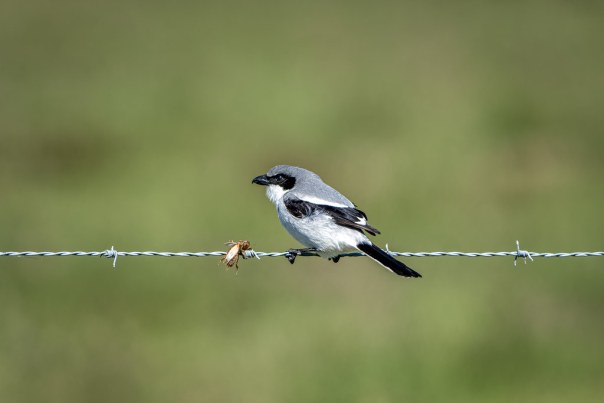It’s been a little over a month since my last post. I enjoyed writing this one after such a long break.
I went over to Merritt Island National Wildlife Refuge toward the end of August. I wasn’t expecting to see much, but I wanted to get out and photograph something. I’m glad I did, because the sunrise was one of the best I’ve ever watched.
 Nature’s Gift
Nature’s GiftThat photo’s from Veterans Memorial Park on the west side of the Indian River looking east toward MINWR and Kennedy Space Center. I was concentrating on the sunrise when I noticed several other folks had shown up. One was Pat H., who I’ve known for a while. I’m glad I ran into her since she was there to photograph the Artemis 1 SLS rocket on the pad at launch complex 39B. At the time, the planned launch was a couple days later. After we talked, I went and got my long lens to make a close up photo of it (the header image). You can see a higher res version on Flickr at this link: https://www.flickr.com/photos/edrosack/52311586034/in/dateposted-public/. I’d hoped to include a photo of the launch in today’s post too, but it’s been postponed. Hydrogen is tricky stuff!
After that I went through Gator Creek Road, Black Point Wildlife Drive, and also stopped by the Bairs Cove boat ramp. This kayaker had gotten up very early to go fishing. I didn’t see him catch anything while I was there though.
 A fine morning for fishing
A fine morning for fishingI was happy to find this pretty, young Roseate Spoonbill and its reflection at one of the first corners on Gator Creek.
 Spoonie!
Spoonie!Other birds were a bit scarce, but this Loggerhead Shrike flew right in front of my car and landed in a mangrove. I quickly rolled down the passenger window and pointed my lens at it. Auto focus is amazing now days. My camera locked on the bird in the middle of all those branches at the first shutter press (no – that doesn’t happen all the time!)
 A Bird in the Bush (is worth two in the hand?)
A Bird in the Bush (is worth two in the hand?)I also saw some gators and a raccoon on Black Point, and 5 or more manatees at Bairs Cove – but didn’t get good photos of any of them.
Changing the subject, I was browsing my archives one day and found this image I’d never processed. It’s from one of my previous cameras (an IR converted Olympus E-PL5). I ran it through Lightroom’s enhance detail and the Topaz Sharpen AI plug in and it came out with an amazing amount of detail. I like the subject rendering and the background separation too.
 IR Sunflower
IR SunflowerA few days later, I ran across this blog post http://infraedd.blogspot.com/2014/03/cameras-fuji-x100-hoya-r72-filter.html. He talks about using an R72 filter on a Fuji X100 to make infrared photos. I’ve tried R72 filters before (a long time ago) but maybe I should take another look at them. It would be an inexpensive way to occasionally do a bit of IR photography.
In other news, we’d planned some travel but that got postponed while we dealt with a broken central air conditioner here in hot, humid Florida. Supply chain issues mean it takes a very long time to get a replacement compressor (and other parts). Hopefully that’s behind us now (I hope Murphy doesn’t read this). As a side note, I didn’t realize Portable ACs work as well as they do!
Sorry to ramble on for so long. I suspect that my posts will be longer since they’re less frequent now. I hope all of you are doing well. Thanks for stopping by and reading my blog. Stay positive, be kind, take care of yourselves and each other. And if you can, make some photos!
©2022, Ed Rosack. All rights reserved















